Parsio vs Airparser: Which Document Parser Should You Use?
A side-by-side comparison of Parsio and Airparser—two powerful document parsers. Learn which tool to use based on your documents, use cases, and team needs.
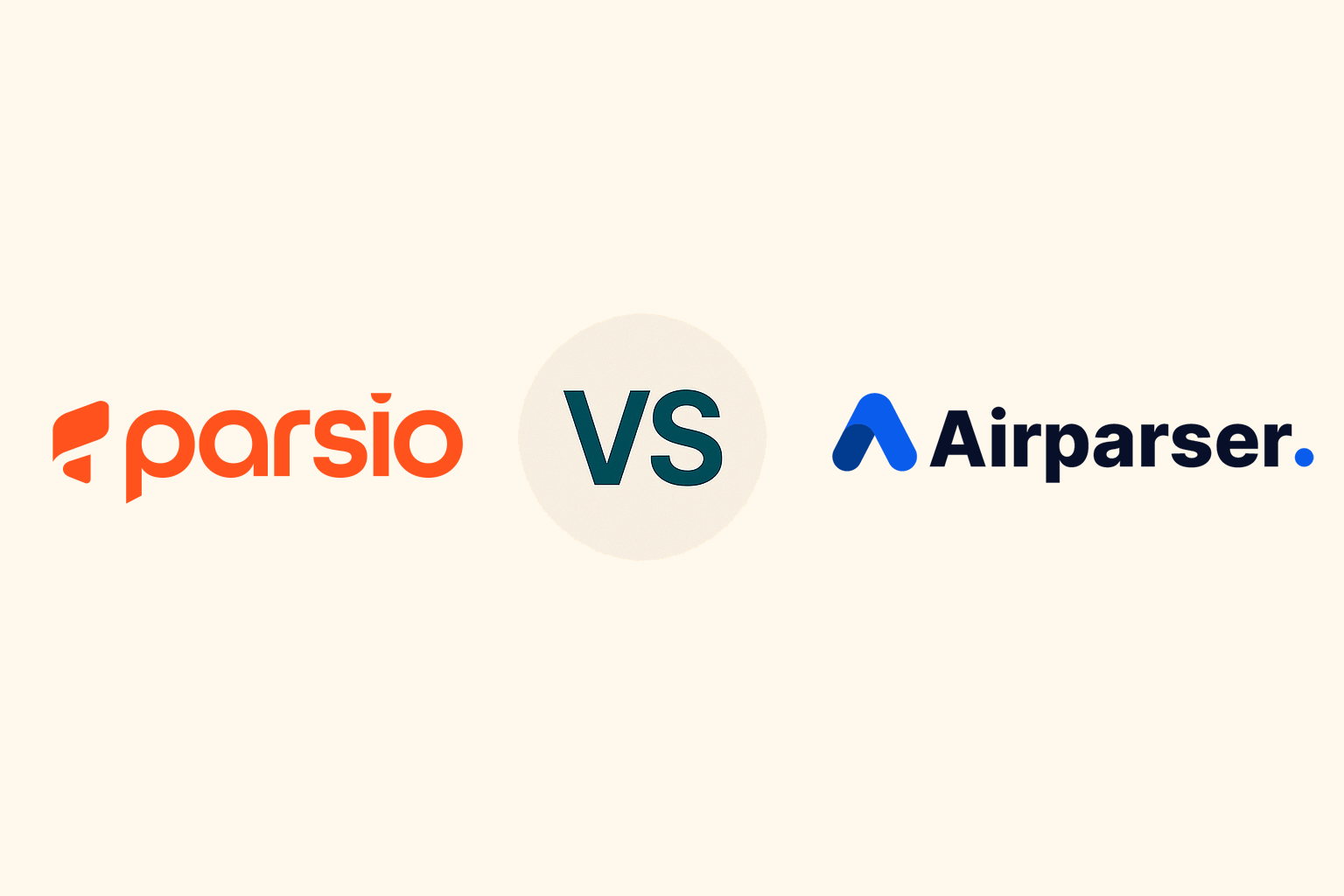
Choosing the right document parsing tool depends heavily on the documents you process and your automation needs. At first glance, Parsio and Airparser seem similar: both extract structured data from emails, PDFs, and scanned documents using AI. But under the hood, they offer different strengths, workflows, and ideal use cases.
The good news? You don’t have to choose blindly. Since both are built by the same team, there’s no bias—just clarity. In this article, we’ll break down where each tool shines and help you decide which to use for your specific case.
Let’s compare Airparser vs Parsio across features, parsing capabilities, strengths, and limitations.
1. Parsing Approach: Template-Based vs Schema-Driven
Parsio: Multiple parsers, including visual template-based
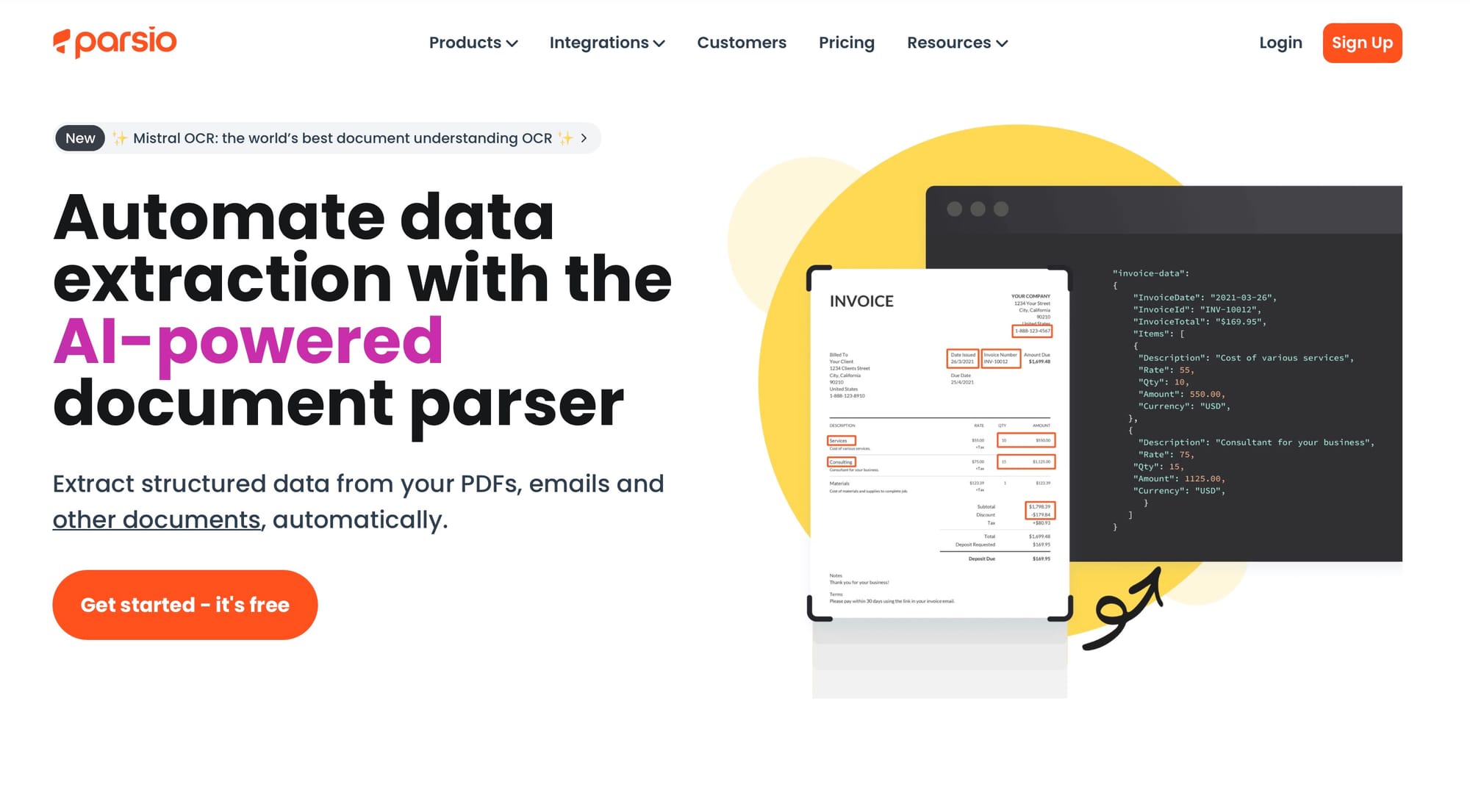
Parsio offers four different parser types, each suited to different document types and complexity levels:
- Rule-based parser: Ideal for fixed-layout, machine-generated documents (e.g. Shopify emails, ADF XML). You highlight the data you want to extract, and Parsio automatically builds a reusable parsing template based on visual patterns—no code or rules required. This is Parsio’s template-first approach.
- Pre-trained AI models: For documents like invoices, receipts, and bank statements with varying layouts. These models require no setup—just upload the file and get structured data.
- GPT-powered parser: Useful when you need to extract data from semi-structured or free-form documents. You simply describe what you want in natural language (e.g., “Extract the customer name and shipping address”), and the LLM handles the parsing.
- OCR converter: While not a parser in the strict sense, Parsio’s OCR tool lets you convert scanned PDFs and images into editable formats (Word, TXT, Excel, Markdown), making downstream parsing possible.
This multi-engine setup gives Parsio users flexibility across a wide range of document types—from highly structured to moderately complex layouts.
Airparser: Schema-first, LLM-powered engine
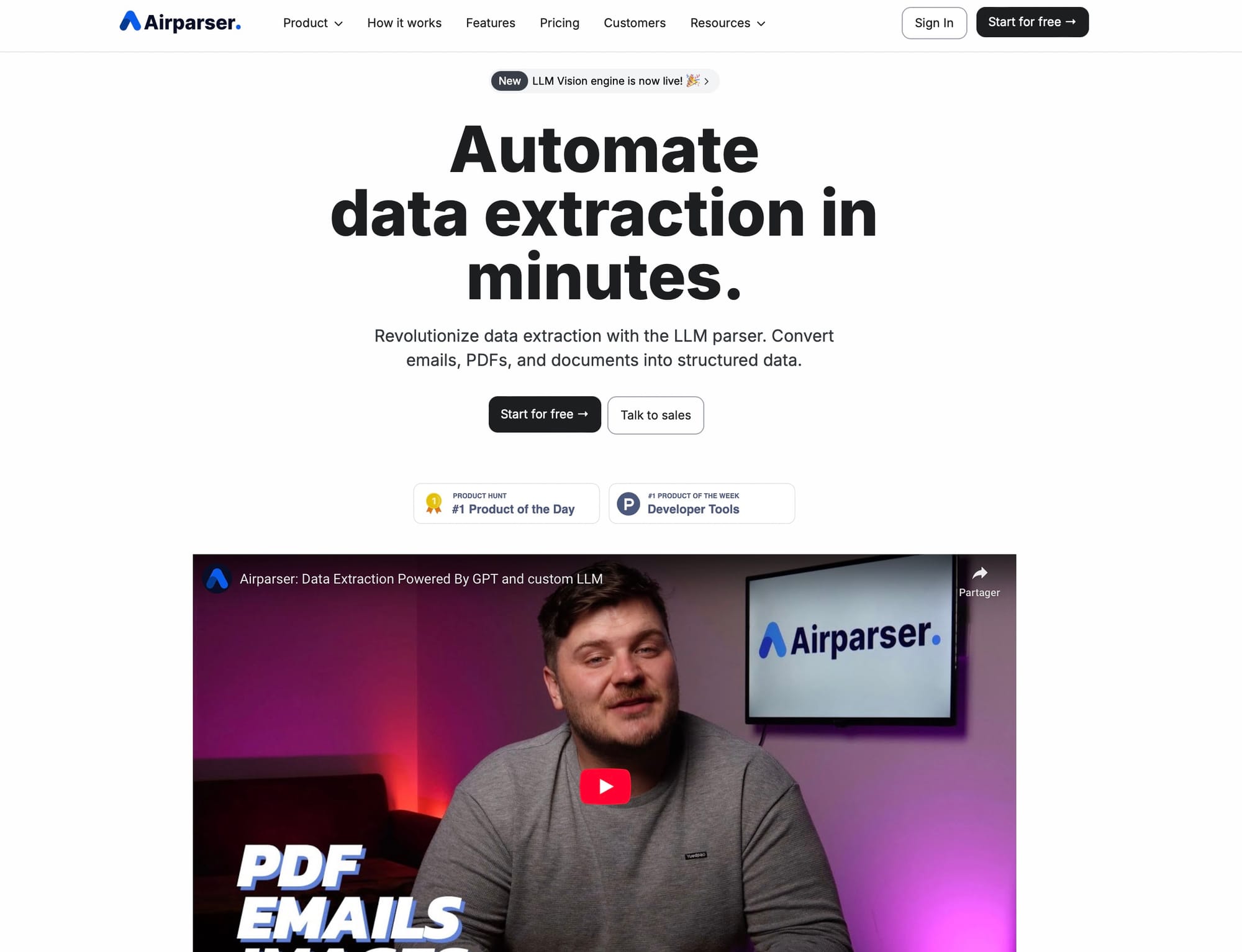
Airparser works differently. You define a schema—a list of fields you want to extract—and the LLM engine does the rest. There’s no need for prompt engineering or template building. Airparser analyzes each document and reliably extracts your fields, even if the layout changes between files.
It’s especially powerful for unstructured, messy, or multilingual documents, like:
- Contracts and legal docs
- Customer messages
- Utility bills
- CVs and resumes
- Emails with varying formats
With Airparser, you don’t create templates. You just specify the fields and plug into your workflow.
2. Matching the Right Parser to the Right Document
Fixed layouts or known document types → Parsio
If your documents are generated by a system—like an e-commerce platform, CRM, or lead form—the structure is usually consistent across files. That’s exactly where Parsio excels.
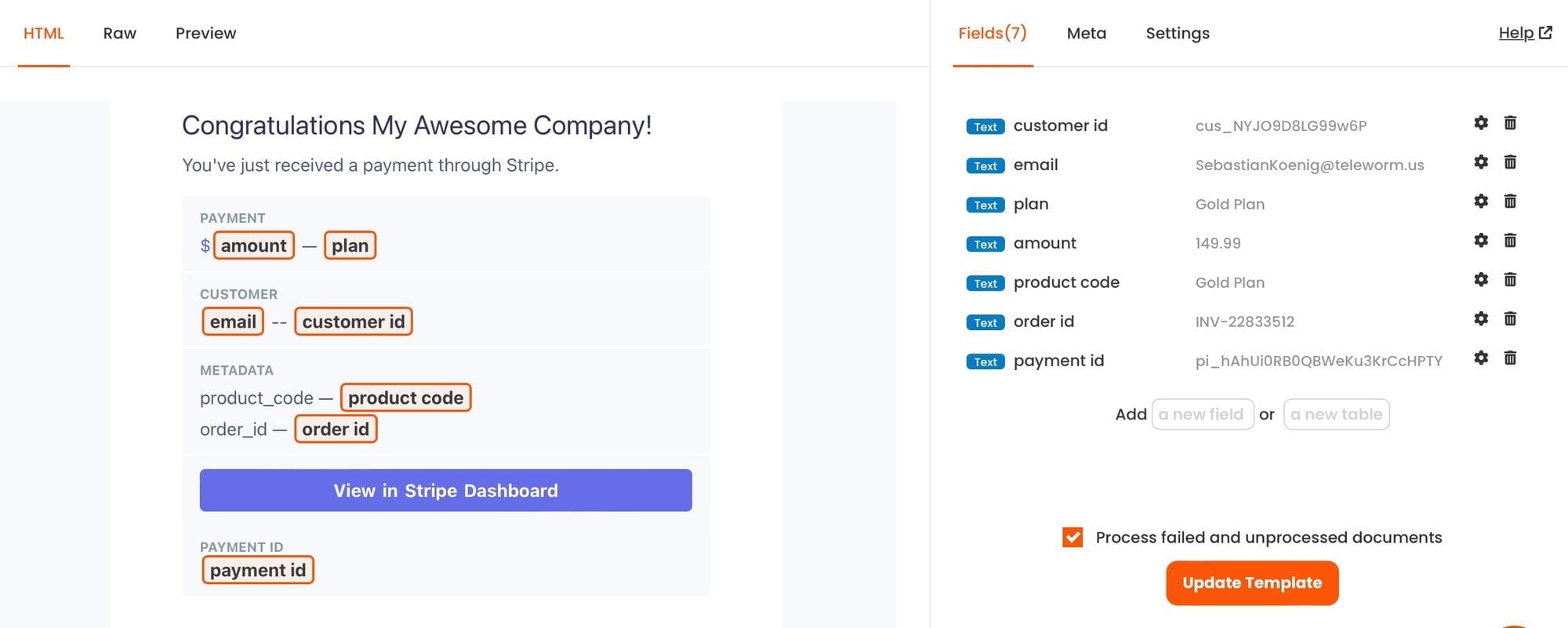
But Parsio also goes beyond templates. Its pre-trained AI models are purpose-built for popular formats.
Ideal use cases for Parsio:
- Transactional (machine-generated emails)
- Recurring invoices from known or unknown vendors
- Bank and credit card statements
- Receipts for expense automation
- Structured PDF tables (converted to Excel or CSV)
- Shopify, Amazon, or WooCommerce order confirmations
- Business cards
- Scanned IDs for KYC
- ADF XML lead forms from dealerships
In all of these, Parsio is faster, cheaper, and easier to automate—either through templates or AI-powered auto-parsing.
When layout changes → Airparser
If your documents are more unpredictable—varying in layout, structure, or even language—Airparser is the better fit.
Its LLM-powered engine understands context, meaning, and relationships between data points. It doesn’t rely on visual cues or predefined rules. This makes it robust for parsing real-world messiness, such as:
- Resumes, cover letters, and unstructured job applications
- Invoices, receipts
- Email signatures (lead generation)
- Handwritten or scanned forms with OCR preprocessing
- Customer emails with inconsistent formatting
- Multilingual documents in English, French, German, Arabic, etc.
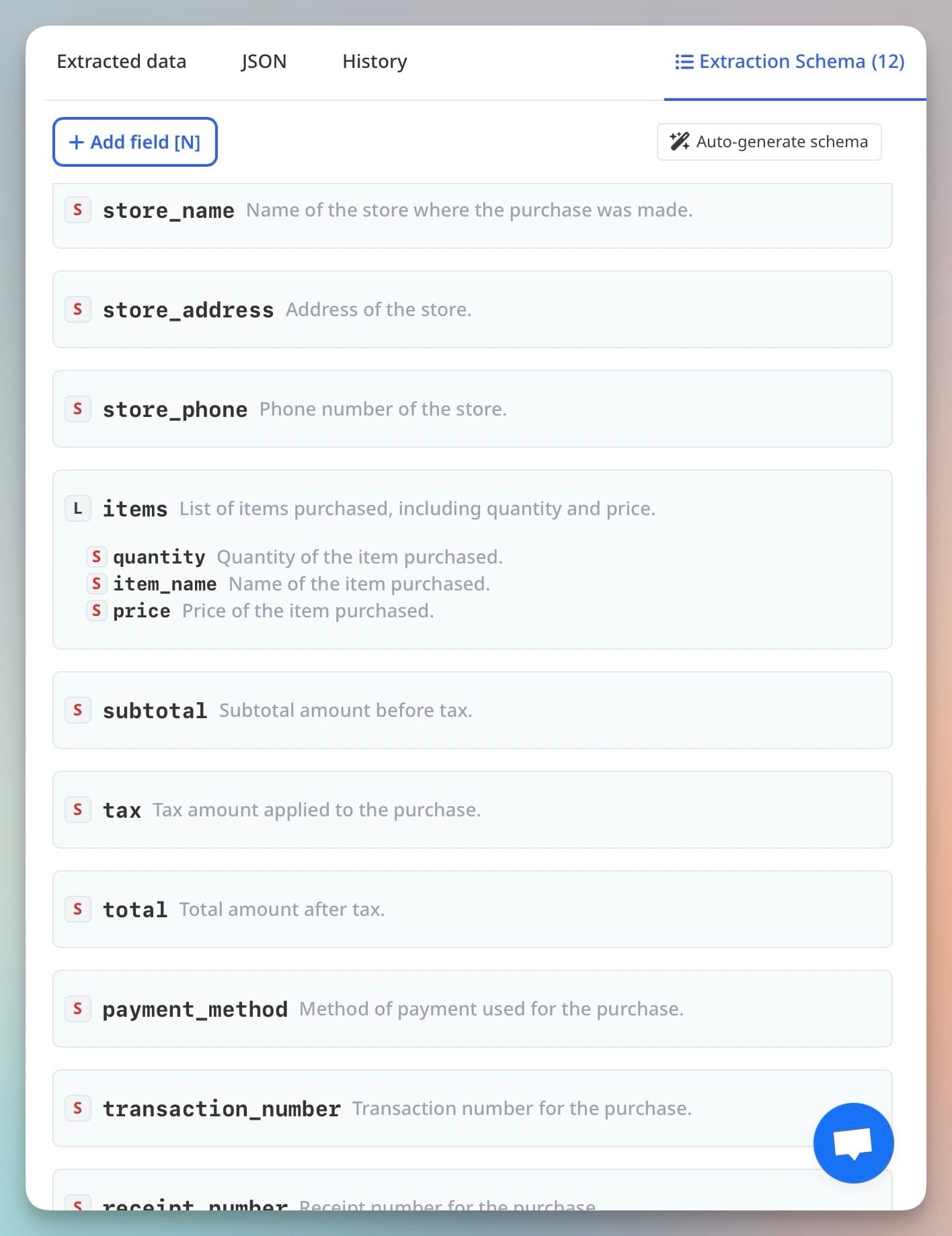
Airparser is especially helpful when you need to extract the same type of data from many different formats. For example, pulling out:
- “Billing Address” from invoices, statements, and utility bills
- “Payment Amount” from various document types and layouts
- “Contact Info” from resumes or CVs in wildly different styles
Because Airparser doesn’t need you to build templates or prompts, it saves time and adapts on the fly—ideal for teams working with high-document variability.
3. Parsing Accuracy and Maintenance
Parsio: High precision with repeatable formats
Once a template is created in Parsio, parsing accuracy is very high—as long as the input follows the same structure. You don’t need to worry about hallucinations or extraction drift. Even if the document volume increases, Parsio performs consistently.
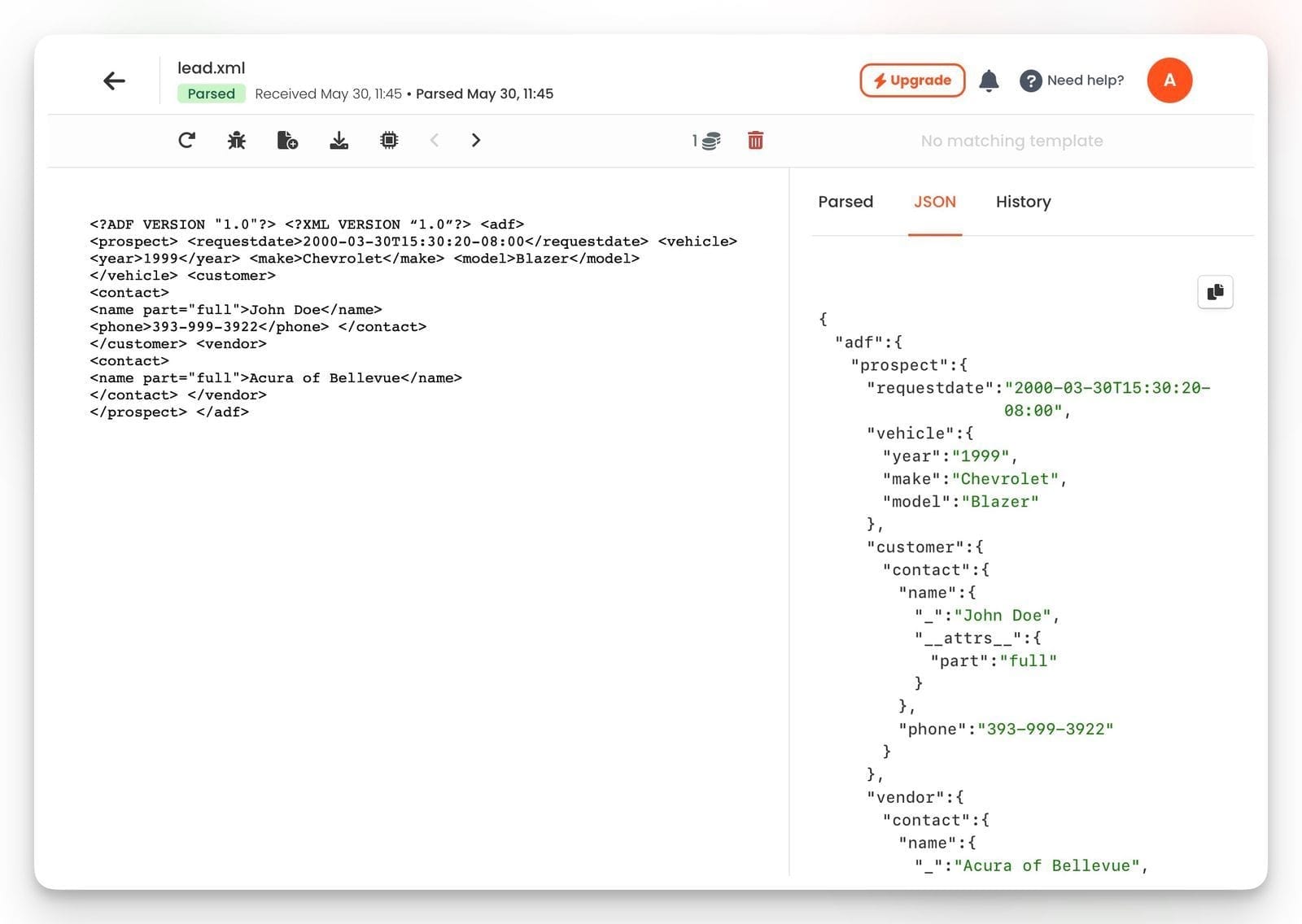
However, if your documents have layout drift or change regularly, you may need to update templates or switch to a different parser (like GPT-powered parsing or an AI model, if available).
Parsing is fast and predictable, with clear control over what’s extracted and where.
Airparser: AI-powered flexibility with less maintenance
Airparser shines in situations where layouts evolve. It requires almost zero maintenance, even if input formats vary. Thanks to LLMs, it can understand new patterns on the fly without retraining or updating rules.
Accuracy can sometimes depend on the quality of the documents and clarity of the schema. But for most business documents—emails, PDFs, scanned forms—Airparser performs reliably and doesn’t need human supervision after setup.
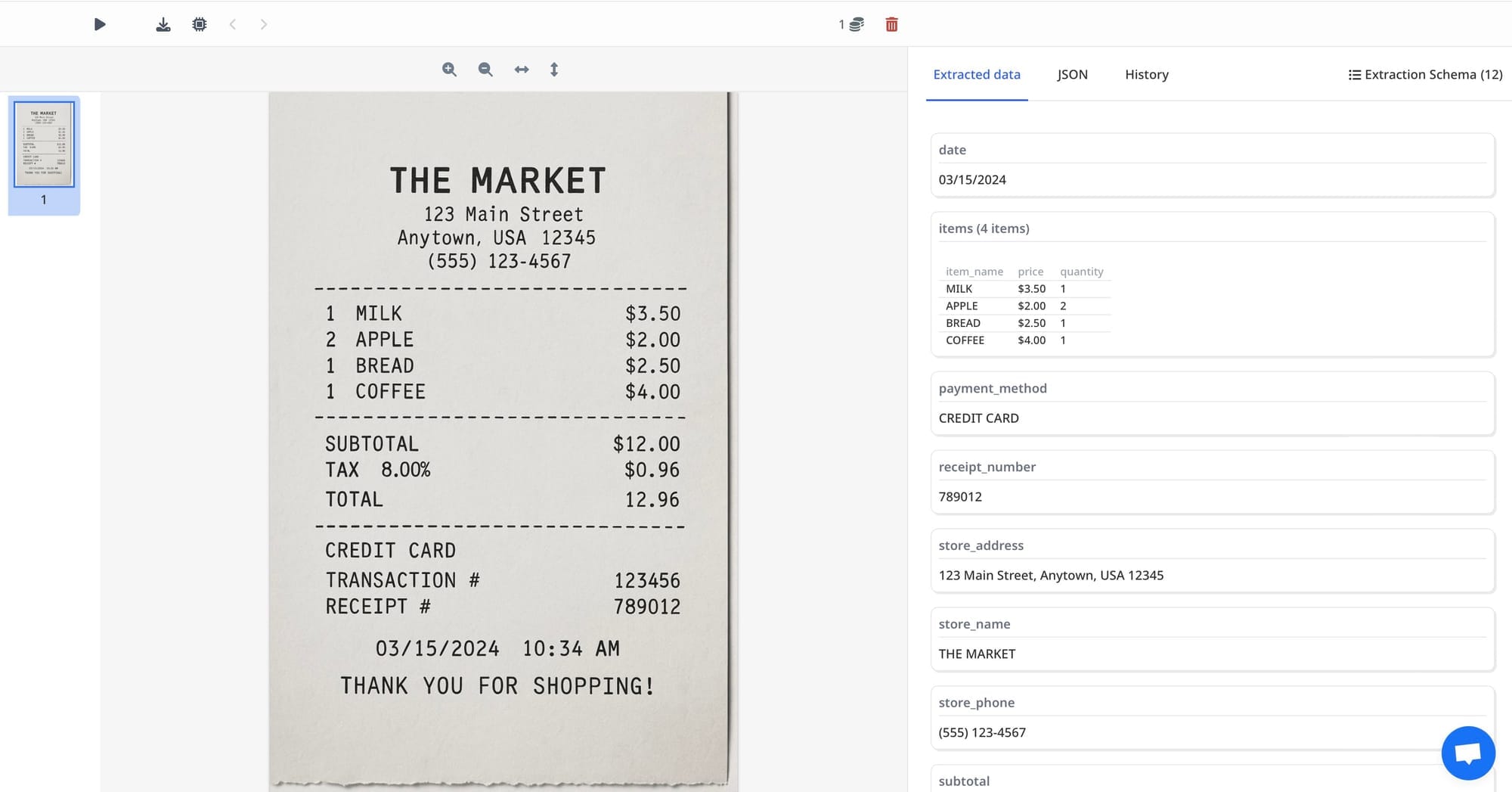
It’s an excellent choice for:
- Rapid onboarding of new document types
- Situations where you don’t control input formats
- Complex documents where traditional templates fail
4. Use Cases: When to Use Parsio or Airparser
Parsio: Best for structured documents and repetitive formats
Parsio is perfect when you're working with:
✅ Machine-generated emails
Such as transactional order confirmations, booking notifications, or lead forms that follow a fixed layout. Parsio’s visual template builder lets you extract fields quickly—just highlight them once, and Parsio will auto-detect the pattern.
✅ Invoices, receipts, and bank statements
Thanks to its pre-trained AI models, Parsio handles different layouts for the same type of document. For example, you can parse receipts from various merchants or bank statements from different institutions.
✅ ID documents and business cards
If you’re handling KYC onboarding, Parsio can extract data from passports, ID cards, and driver’s licenses. It’s also a great fit for parsing contact info from business cards.
✅ Table extraction from PDFs
Need to convert a table from a PDF into Excel or Google Sheets? Parsio’s table extraction engine makes this easy—ideal for expense reports, order lists, or bank transactions.
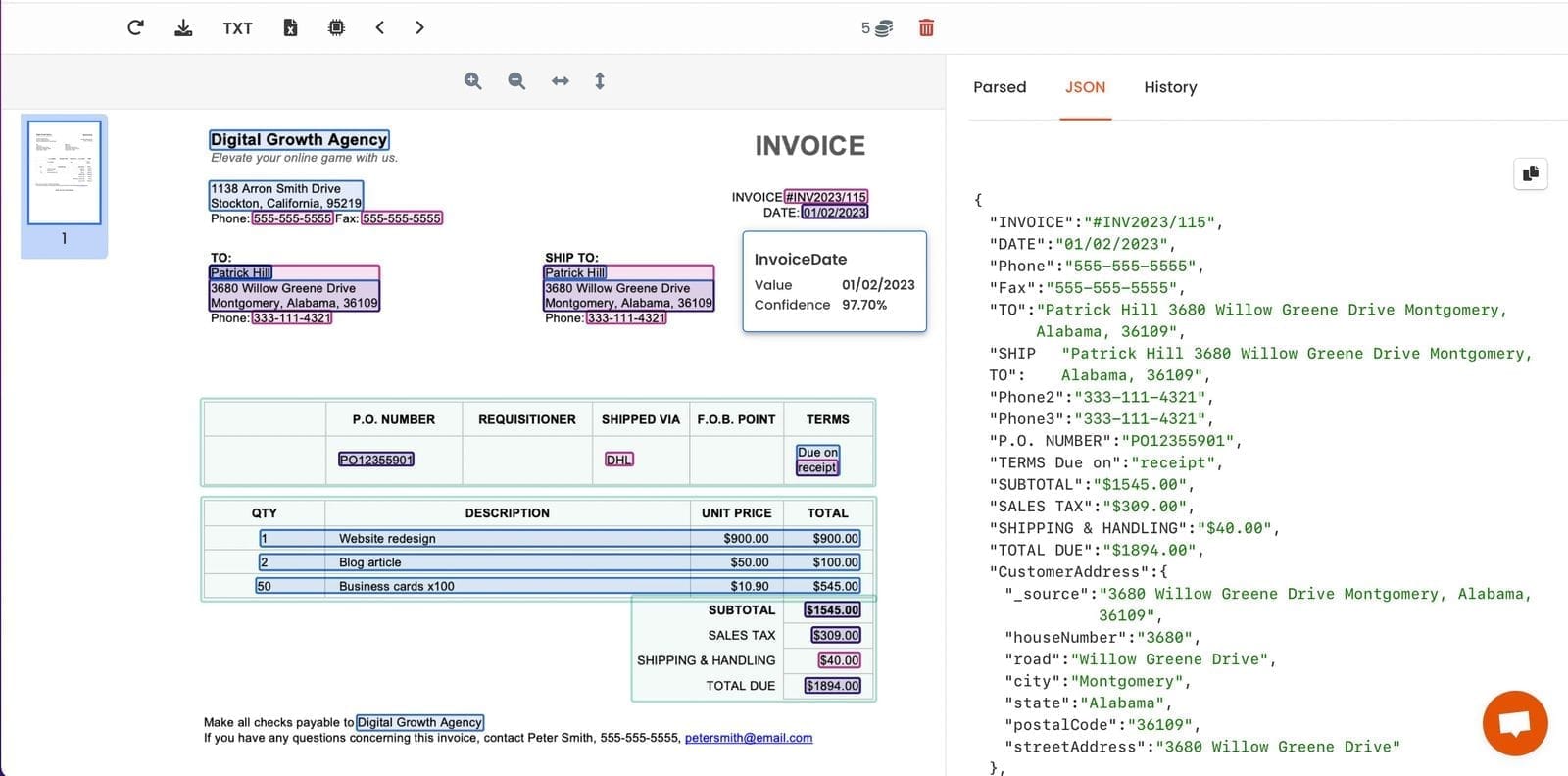
Airparser: Best for flexible, messy, or multilingual documents
Airparser is built for real-world complexity. Choose it when:
✅ You receive varying formats of the same document
Invoices from hundreds of vendors? Utility bills from dozens of providers? Airparser doesn’t need different templates. Define the schema once, and it’ll handle the rest.
✅ You’re dealing with free-form documents
Emails from leads, support tickets, application forms, and messages often come in unpredictable formats. Airparser excels here, identifying structure even when it isn’t obvious.
✅ You work in multiple languages
Airparser supports multilingual documents without extra setup. It’s a great choice for international businesses or support teams working across regions.
✅ You want AI parsing without writing prompts
Just define the fields you need—Airparser figures out the rest. Unlike GPT or Claude-based solutions, no prompt engineering is required.
5. Limitations to Know
Parsio
- Not suited for documents with highly variable layouts, unless covered by its pre-trained models or the GPT parser.
- OCR support is limited to converting scans into editable formats. While it works well for digitization, it’s not a parsing engine per se.
- Schema-less by design – you don’t define fields upfront. Instead, you build templates visually by example.
Airparser
- Not ideal for long documents (10+ pages). LLM-based extraction becomes slower and more expensive at scale.
- Less predictable than rule-based systems if you require strict field locations (e.g., legal notices with required formatting).
- Requires schema definition – you must list the fields you want, though no prompts or rules are needed.
6. Integrations and Automation
Both tools are designed with automation in mind and support:
- Zapier and Make (formerly Integromat)
- Webhooks
- Public APIs
- Export to Excel, CSV, JSON
- Google Sheets integrations
Parsio: Seamless for fixed-format automation
If you’re building workflows around repetitive incoming documents—like routing Amazon order emails to a spreadsheet—Parsio is fast, lightweight, and predictable. You build once, and it runs reliably.
Its integration with Make and Zapier allows actions like:
- Auto-upload parsed data to Google Sheets
- Push extracted fields into CRMs like Pipedrive
- Send structured data to accounting tools
Airparser: Built for schema-driven end-to-end flows
Airparser is ideal if you want to scale and automate diverse document types across different workflows. Its schema-based logic works especially well for:
- CRMs and ERP systems
- LLM-based tools that consume structured JSON
- Zapier flows with conditional routing
- Parsing pipelines with Airtable or Notion
Because it doesn’t rely on templates, you can onboard new document types instantly—no training or template building required.
Conclusion: Which One Should You Use?
Here’s a simple way to decide:
| Use Case | Use Parsio | Use Airparser |
|---|---|---|
| Fixed-format emails (e.g., Shopify, ADF XML) | ✅ | – |
| Invoices from 100+ vendors | – | ✅ |
| Extracting tables to Excel | ✅ | ✅ |
| Processing scanned IDs / business cards | ✅ | ✅ |
| Emails from customers with varying structure | – | ✅ |
| Multilingual document parsing | – | ✅ |
| Parsing legal contracts or resumes | – | ✅ |
| Long documents (>10 pages) | ✅ | – |
| OCR-based digitization | ✅ (converter only) | ✅ (via vision engine) |
| Schema-free, visual rule creation | ✅ | – |
| Schema-driven, layout-agnostic parsing | – | ✅ |
In short:
- Use Parsio when your documents follow the same structure or are covered by Parsio’s pre-trained models. It’s fast, affordable, and predictable.
- Use Airparser when you need flexibility, multilingual support, and AI-powered accuracy across messy or varied documents.
For many teams, it’s not a question of Parsio vs Airparser, but when to use each.
Use Parsio for high-volume, structured flows—like Shopify orders, bank statements, or scanned ID documents—where accuracy, speed, and automation matter most.
Use Airparser when your documents are more complex, variable, or multilingual—like support emails, utility bills, or handwritten forms.
Both tools integrate seamlessly with your automation stack, and they can even work side by side in the same workflow.
Not sure which one is best for your use case?
Contact us — we’ll be happy to help you choose the right tool or combine both for maximum efficiency.
